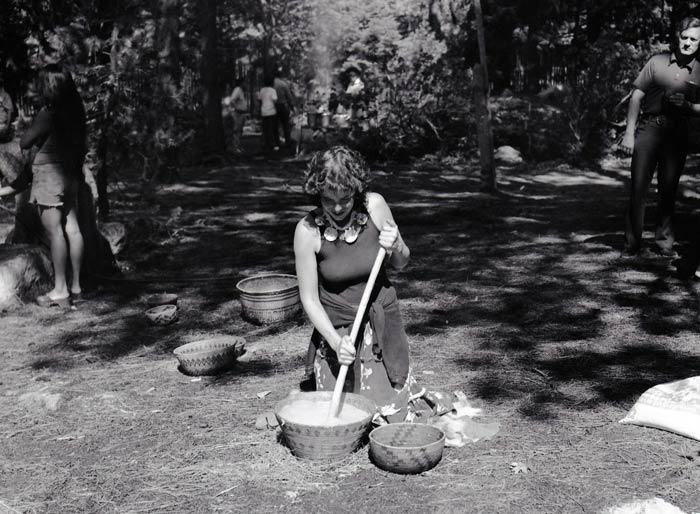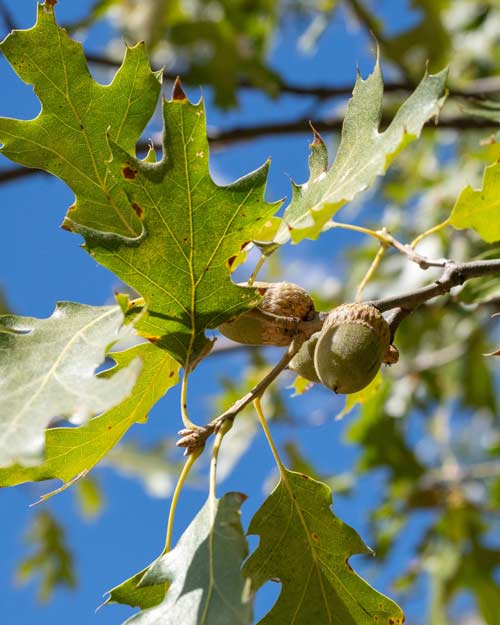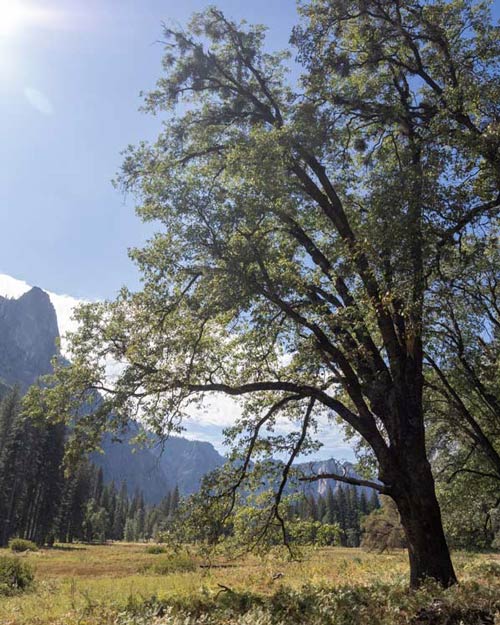Acorn: Binder of People to Place
October 8, 2024 – Yosemite National Park officials offer some history on Native American acorn use, part two.
Because of their nutritional value, storability, and abundance during mast years, acorns provided a reliable source of nourishment for members of Southern Sierra Miwuk Nation, Bishop Paiute Tribe, Bridgeport Indian Colony, Mono Lake Kootzaduka'a, North Fork Rancheria of Mono Indians of California, Picayune Rancheria of the Chukchansi Indians, and the Tuolumne Band of Me-Wuk Indians who found themselves in Yosemite Valley. To nourish the oaks in return, cultural burning was regularly performed, removing competing species from overshadowing and outgrowing the black oaks.
The impacts of colonization, like land dispossession and degradation, assimilation of Native youth through boarding schools, and revocation of citizenship, threatened Native culture, including traditions like acorn harvesting. These impacts forced lifestyle changes throughout the Central Valley and California Coast that were soon pushed to those living in and near what is now Yosemite National Park. Conflicts over land escalated during the gold rush, and militias burned acorn caches and villages through Yosemite Valley, to starve and drive Indigenous residents out.
Now, it is uncommon for daily life to center around acorn preparation and consumption. However, acorn remains a central component of special gatherings, Big Times, and other tribal ceremonies. There are many ongoing tribal efforts to tend black oak through restoration, planting, and cultural burning. Last year, the Yosemite Ancestral Stewards (YAS) crew focused on safeguarding and conserving black oak groves by transplanting hundreds of black oak saplings and clearing forest floor debris to foster a healthier ecosystem.
The land holds the stories of Yosemite's original and enduring stewards. Look to the flat rocks dimpled with mortar holes and listen to acorns falling from tended black oaks to hear them.

(Pictured above) Kim Hamilton, former Indian Cultural Program employee, cooking acorn mush at the Roundhouse Dedication in Yosemite Valley.

(Pictured above) Mortar hole left in pounding rock.


Source & photos: NPS
Related: History of Native American Acorn Use in Yosemite National Park








